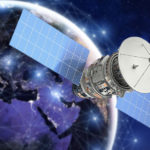A velocity field is given by u=\frac{y}{x^{3}+y^{3}} and v=\frac{-x}{x^{3}+y^{3}}. Find its vorticity.
A velocity field is given by u=\frac{y}{x^{3}+y^{3}} and v=\frac{-x}{x^{3}+y^{3}}. Find its vorticity.
Vorticity is the curl of flow velocity. It is twice the angular velocity of a fluid element. Angular velocity of a fluid element in three dimension is \omega =\omega_{x}i+\omega _{y}j+\omega _{z}k Vorticity, \xi =2\omega\Rightarrow \xi = \left [ \left ( \frac{\partial w }{\partial y}- \frac{\partial v}{\partial z} \right )i+ \left ( \frac{\partial u }{\partial z}-\frac{\partial w}{\partial x} \right )j+ \left ( \frac{\partial v}{\partial x}-\frac{\partial u}{\partial y} \right )k \right ] \Rightarrow \xi = \nabla \times V If \nabla \times V = 0, the flow is irrotational.
If \nabla \times V \neq 0, the flow is rotational. \nabla \times V =\begin{vmatrix} i& j& k\\ \frac{\partial }{\partial x}&\frac{\partial }{\partial y} &\frac{\partial }{\partial z} \\ u&v &w \end{vmatrix} =\begin{vmatrix} i& j &k \\ \frac{\partial }{\partial x}& \frac{\partial }{\partial y} &\frac{\partial }{\partial z} \\ \frac{y}{x^{3}+y^{3}}&\frac{-x}{x^{3}+y^{3}} & 0 \end{vmatrix} =i\left [ 0 \right ]-j\left [0 \right ]+k\left [ \frac{\partial }{\partial x} \left [ \frac{-x}{x^{3}+y^{3}} \right ]-\frac{\partial }{\partial y}\left [ \frac{y}{x^{3}+y^{3}} \right ] \right ]=i\left [ 0 \right ]-j\left [ 0 \right ]+k\left [ \frac{2x^{3}-y^{3}}{\left (x^{3} +y^{3} \right )^{2}}- \frac{x^{3}-2y^{3}}{\left (x^{3} +y^{3} \right )^{2}} \right ] =k\left [\frac{1}{x^{3}+y^{3}} \right ] Therefore, the flow field is rotational except at the origin where x^{3}+y^{3}=0 .




